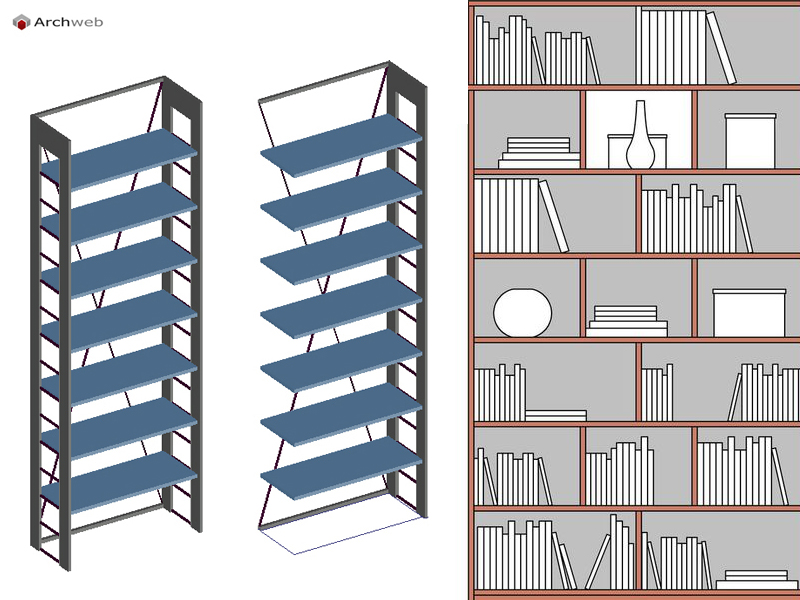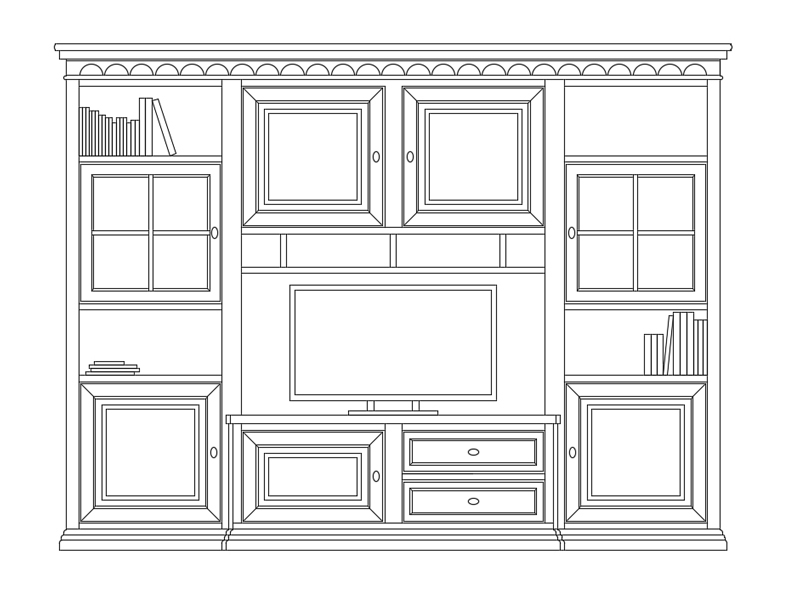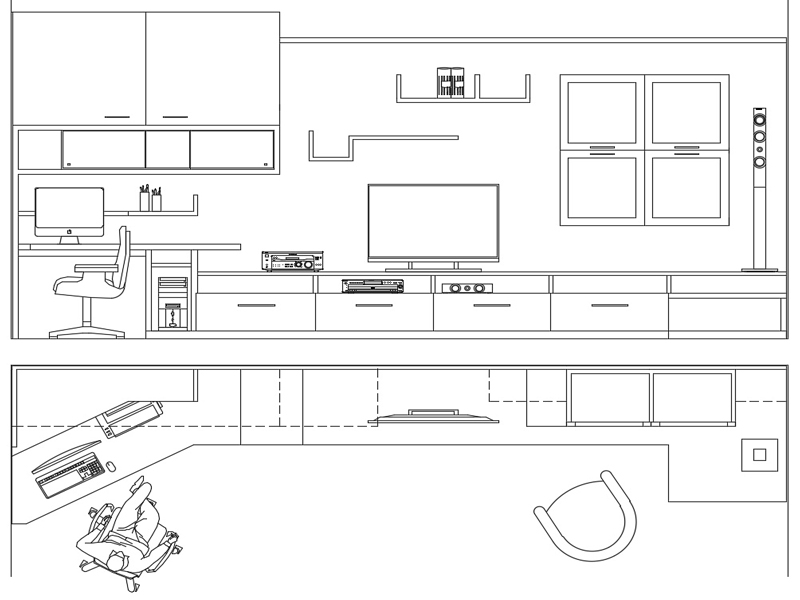Bookcase
A piece of furniture from the past that always remains present
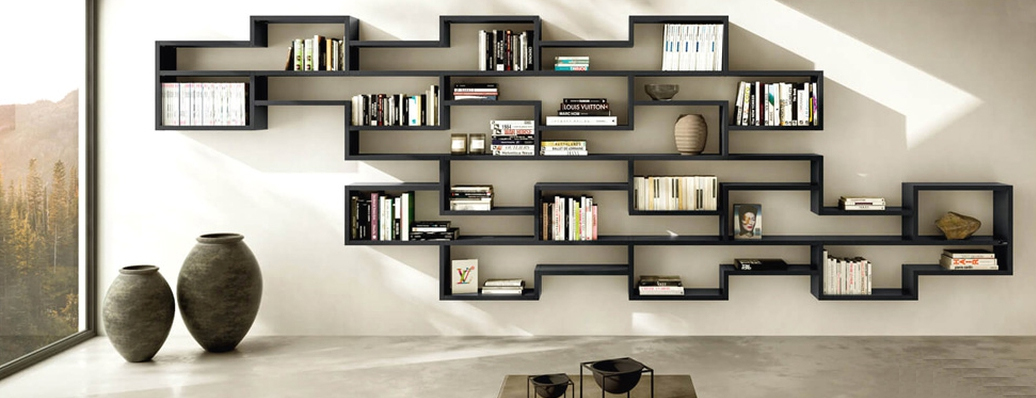
Scholars identify the appearance of writing as the end of Prehistory and the beginning of History.
Thanks to it, man was able to begin to “dialogue” with his fellow men not only verbally but also physically by impressing the important data for him on physical supports that he could then donate to other men or keep in a given place and then resume all occurrence.
Over time and with the opening of new commercial routes, the need was felt to create lighter and more manageable physical supports but at the same time less fragile and more capacious. Thus it was that from the primitive clay tablets we moved on to papyri, parchments and then to books using sheets of paper as material. During this evolution lasting millennia, one element has remained unchanged and is the physical place where these documents were stored: the bookcase.
The very first “bookcases” were simple wall niches with little decoration and shelves on which various documents and objects were placed. You have to make a big leap in time until you reach the Middle Ages in order to find places specially made for the conservation of documents, namely monasteries.
In these places the books containing the knowledge of man were made and kept.
The bookcase, from a simple niche with shelves, became a well-designed piece of furniture with a wooden structure, sturdy shelves organized according to the type of document it was to host and wooden or glass doors, to protect the contents from dust. While the first real bookcases began to be built in the monasteries, in the residences of the nobles the few books they owned were crammed into trunks or chests of drawers. It was only between the end of the 16th and the beginning of the 17th century, the full Baroque period, that we find real bookcases made of precious wood with curved and soft lines equipped with inlaid frames and Corinthian-style columns with refined finishes. A perfect example is the Baroque Library of the Klementinum in Prague.

With the advent of printing, books were no longer handwritten but printed, so different copies could be made of each volume. This favored, in the years to come, especially among the nobles, the spread of private libraries in their homes as a symbol of wealth, superiority and wisdom.
In the nineteenth century this spread reached its peak. Each noble residence had to have a well-stocked library, but the style of the library changed, passing from the sumptuous decorations of the Baroque or Louis XVI style to the Empire style, cleaner, more practical, with more solid and squared shapes.
A notable example is the Giacomo Leopardi library.

In the twentieth century the bookcase began to be present in almost all homes, becoming a piece of furniture thanks to which designers could indulge themselves with their imagination, creating solutions with a thousand shapes and colors, using it as a piece of furniture capable of decorating and making an environment unique. . Today the bookcase plays a multifunctional role, in fact it is no longer used as a simple container for books but also as a piece of furniture on which to place furnishings to create full and empty games with touches of color.
Thanks to its characteristic of being modular, it can be accessorized with various elements, such as drawers, storage bases, display cabinets or closed wall units, excellent for containing various objects and to give them a lively and unique appearance. We can group the different models of bookcases into three distinct categories: wall-mounted, double-sided and suspended.
Wall bookcase
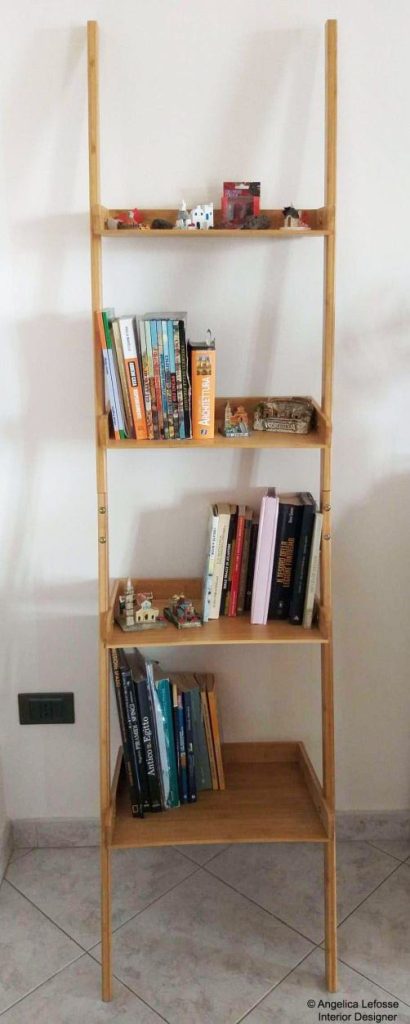
This is the most common and ancient solution. It consists of a structure that rests directly on the floor but some models provide for anchoring to the wall.
These solutions are often equipped with closed elements with blind or glass doors, thanks to which the monotony and heaviness that would be created if all the shelves were filled with books is eliminated. Wall-mounted bookcases include those that have a finished and accessible front part while the back will be placed next to the wall so as to hide backrests and any careless parts.
Here is an example of a wall bookcase.
This particular bookcase, with the appearance of a ladder leaning against the wall, is a typical example of a bookcase with a triple function: bookcase on which to place one’s own books, display stand for small items or souvenirs and decorative, that is, capable of conferring amazement on who looks at it thanks to its original appearance.
Double-sided bookcase
Thanks to its characteristic of being self-supporting, this type of bookcase can be placed both on the wall and free-standing, i.e. it can act as a separator element to divide a single environment into two or more distinct spaces, without having to give up the natural light coming from windows or stained glass windows, which, on the other hand, would happen if blind walls were built in masonry or plasterboard.
A perfect example of a self-supporting bookcase is the Tao designed by the Designer Umberto Asnago for the Orsenigo brothers in the 2 arched and linear models.

This bookcase, composed of a base in matt lacquered MDF wood, steel structure and shelves in lacquered MDF or crystal, is the ideal furniture if you need to create, for example, a small study in a living room by dividing the rooms with an element that does not weigh down the environment but rather enhances and enriches it, giving it character and elegance.
The suspended libraries
With suspended bookcases it is possible to create even more that perfect combination between the usefulness of the piece of furniture and the need to have a decorative piece of furniture capable of decorating and making a wall unique. Nowadays, we find infinite solutions. We move from the classic shelves with visible or retractable supports, to single or multiple cubes that can be combined together to create increasingly disparate geometric shapes, bookcases with sinuous and curved shelves capable of making a particular environment on their own.
This category includes the famous Bookworm bookcase by Ron Arad created in 1993. This bookcase brings innovation to the world of bookcases and design in general. Initially it was intended to be made of metal but thanks to the meeting with Kartell it was created in technopolymer, a lighter and cheaper but equally resistant material.

Mixed libraries
You know, design is fantasy and does not have precise rules to follow, so this distinction of the various types of bookcase must be considered only ideally. On the market there are solutions that mix one or more types to create a completely new and innovative one. An example of this is the Lago company that with its 30MM Weightless suspended double-sided bookcase designed by Designer Daniele Lago combines two models of bookcases to create one with a truly striking visual impact.

As you can see from the photo, 30MM Weightless is created by merging a double-sided bookcase with a suspended one, in this case from the ceiling, made light by the play of long and short modules typical of stalactites, as the company itself defines them.
Relax Area: the bookcase attached to the TV cabinet
It is not unusual to find bookcases attached to the TV wall unit. For example, the Tao, the bookcase discussed above, has a model with a TV stand panel attached to it. This happens because in modern houses, increasingly smaller than those of past years, there is a tendency to make spaces multifunctional. Hence the creation of seating areas that can be used both for relaxing watching TV and for reading a book, preferably accompanied by the heat emanating from a fireplace on cold winter days.

In this solution, profit has been combined with pleasure, as can be said. The owners needed a TV in the kitchen but at the same time did not like adding additional furniture that would have made the room too full.
The solution was to frame the TV with suspended bookcases, with such thin contours as to make them light and almost invisible, which contain books and small decorative vases with succulent plants inside.
Another example of an equipped wall with an adjoining bookcase is the Crossing model by the Misuraemme company designed by designer Mauro Lipparini.

The photo shows the Crossing wall bookcase, equipped with wooden containers, LED lighting and TV compartment. Despite its large size, the various open compartments and the perfect combination of colors and finishes of which it is composed give it lightness and a very scenic look. The era of technology allows you to have everything at your fingertips in digital format but the charm and scent of the printed book can never be replaced and it is for this reason that the bookcase will always be a piece of furniture in every home.
Photo cover: LagoLinea bookcase





























































